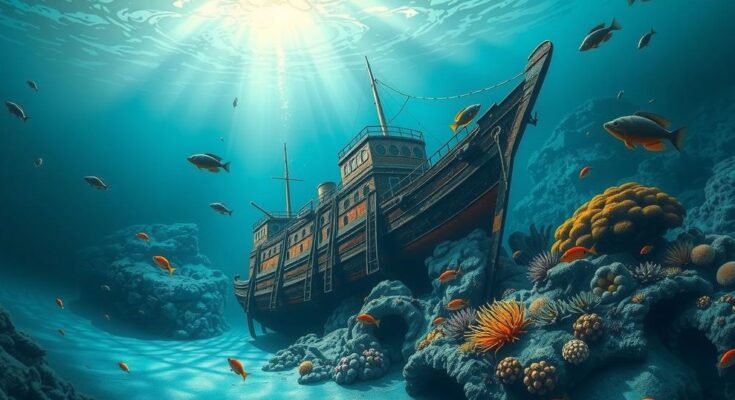Beneath the waves, the world’s oceans cradle a rich tapestry of cultural heritage—sunken ships, remnants of the transatlantic slave trade, and the sacred ties of Indigenous peoples to these waters. At the International Seabed Authority’s (ISA) meeting in Jamaica, NGOs and native representatives advocate for the safeguarding of these treasures, urging that such protection be included in a new mining code intended to supervise undersea resource exploitation.
Hinano Murphy from the Tetiaroa Society echoed this sentiment, declaring, “We are the children of the people of the ocean,” urging recognition of this heritage’s sacredness. As scientists caution against the potential hazards of industrial mining on marine ecosystems, Salim Lahsini from Morocco insisted that the preservation of underwater cultural heritage must hold equal weight to that of marine biodiversity.
Currently, the draft mining code mandates companies to alert the ISA upon encountering human remains or archaeological sites, but the specifics of enforcement remain unclear. April Nishimura of the Gitxsan clan lamented, “To define underwater cultural heritage as shipwrecks is very sad for me,” highlighting the deeper spiritual connections Indigenous communities have with these waters.
A coalition spearheaded by Micronesia proposed a broader definition of underwater heritage, encompassing both physical remnants and intangible traditions associated with the sea. While Pacific mining technologies are currently advanced, profit-seekers look towards the Atlantic, eager to exploit its riches. The ocean not only holds remnants of trade and war but also the stories of thousands lost to the depths during the slave trade.
Lucas Lixinski from the University of New South Wales emphasized the significance of this shared heritage, noting, “Many ships carrying enslaved persons sank during the passage,” thus intertwining these histories with our ongoing identities. However, while halting mining operations upon discovering a wreck may be straightforward, addressing the intangible cultural aspects poses more complexity.
Recommendations from Micronesia include establishing a specialised committee to assess the impact of mining on underwater heritage, integrating Indigenous voices in decision-making. Charlotte Jarvis of The Ocean Foundation highlighted existing techniques for protecting tangible naval heritage, noting the importance of preemptive data collection to identify shipwrecks and protect these narratives.
The push to protect undersea cultural heritage is central at the ISA meeting in Jamaica. NGOs and Indigenous groups argue that this heritage, including shipwrecks and cultural ties to the sea, must be safeguarded under a new mining code. Advocates propose a broader definition of heritage, include Indigenous voices in decision-making, and stress the significance of both tangible and intangible aspects of cultural history as mining advances into uncharted waters.
In conclusion, the struggle to safeguard undersea cultural heritage emerges as a pressing issue during the ISA discussions. Advocates are calling for the inclusion of both tangible and intangible heritage in the mining code, emphasising the importance of Indigenous perspectives in these crucial decisions. As the world contemplates industrial mining, the intertwining histories resident beneath the seas demand recognition and protection, ensuring they remain cherished parts of human history.
Original Source: www.guampdn.com



